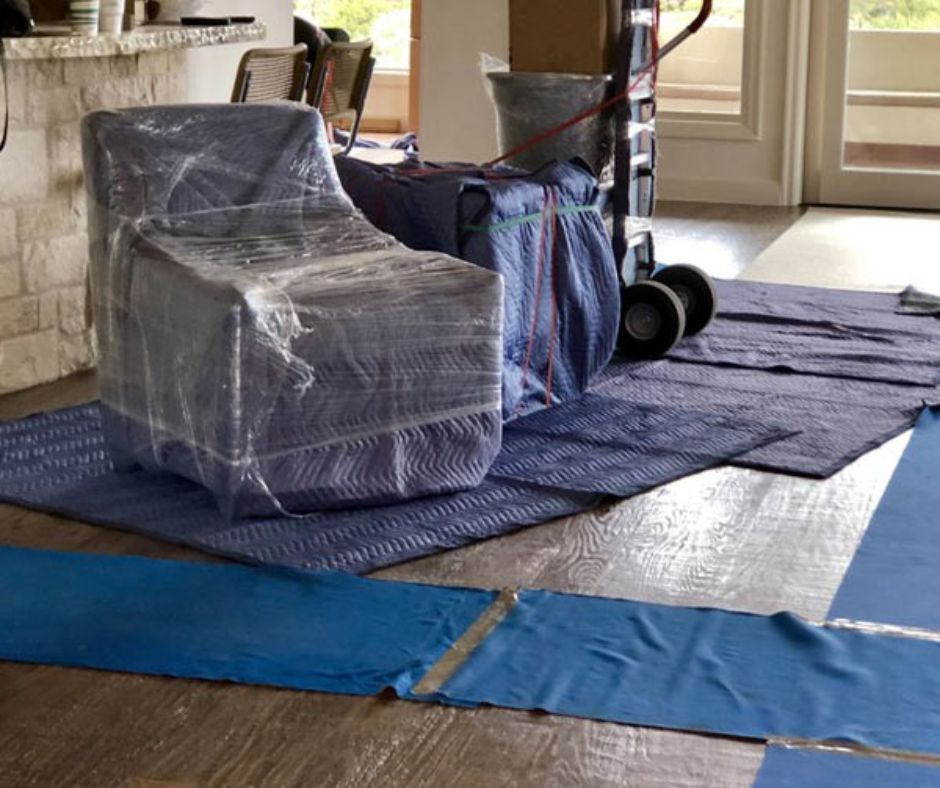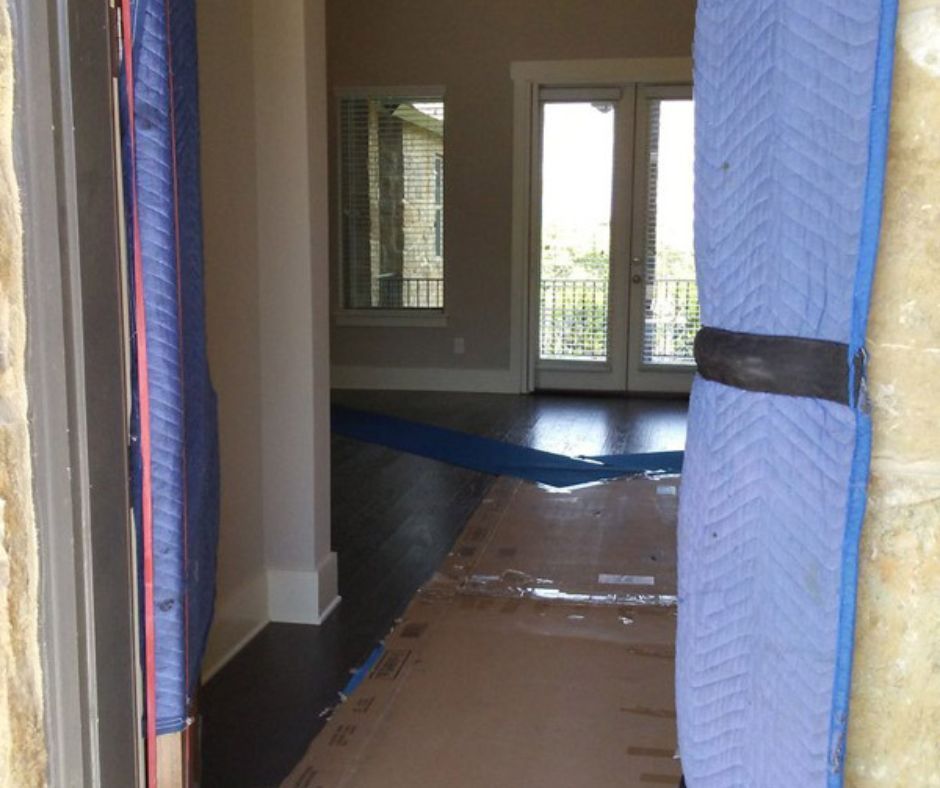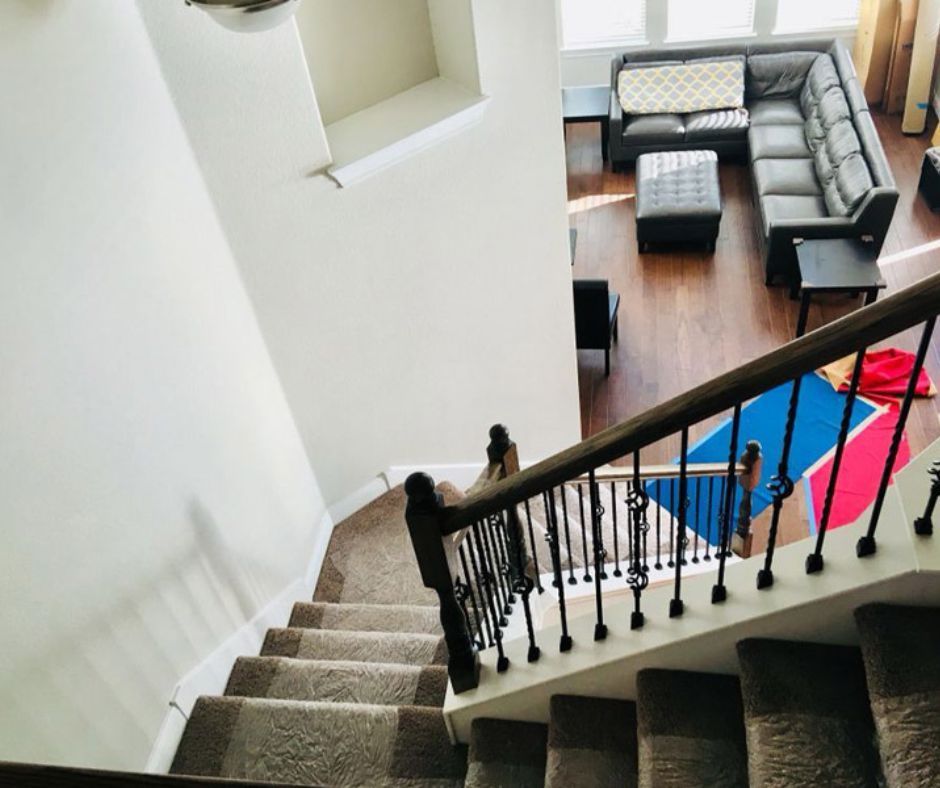Contact Elite Relocation Today
Phone: 512.573.6102
Email: elite.relocationtx@gmail.com
Address:
508 Suzzane Rd, Pflugerville, TX 78660
DIY Vs. Professional Floor Protection: Which Is Best For Your Move?
Moving can be overwhelming, but one factor you should remember is protecting your floors! Whether you do it yourself or hire a professional, floor protection is essential for any move. But which option is best for you? Let's explore the pros and cons of DIY vs. Hiring a professional moving company in Pflugerville, TX, to help you protect your floor.
Every detail matters when protecting your floors during the process. For example, you'll need some coverings from carpets to hardwood floors to protect them from scratches and damage when you move heavy furniture. If done incorrectly, you could incur expensive repairs - or worse - after completing the move. So what's the best way to keep your floors safe? That's where DIY vs. professional floor protection comes into play.
DIY floor protection might seem like a quick and easy solution, but certain advantages and disadvantages come with both options. Professional movers have access to specialized equipment that helps ensure your floors stay safe throughout the moving process. While doing it yourself means you have control over how much money and effort goes into the project. In this article, we'll discuss DIY vs. professional floor protection so that you can decide which one is best for your move.

Types Of Floor Protection
Regarding protecting floors during a move, there are two main options: DIY and professional. DIY floor protection involves buying materials such as cardboard, felt, plastic sheeting and bubble wrap to cover the floors directly. Professional floor protection is done by an experienced moving company specializing in this service type.
DIY floor protection is often the most cost-effective route. It requires minimal upfront costs and can be done quickly with the right tools. However, it may provide less coverage than professional floor protection. Professional floor protection is the better option if you're looking for complete range and long-term durability.
Professional floor protection typically comes at a higher price than DIY methods, but it's worth it for its superior quality and longevity. Professional movers use thick pads to protect hardwood floors and carpets from damage during the move, providing extra cushioning against furniture dragged across them. They also use heavy-duty plastic sheeting to prevent leaks or spills from damaging surfaces below. As a result, professional floor protection offers the best solution for protecting your floors during a move.
Benefits Of DIY Floor Protection
DIY floor protection can be an excellent option for those looking to save money while protecting their floors during a move. There are several benefits to using DIY methods, such as being able to customize the protection to fit the size and shape of your furniture and appliances and choosing the materials that best suit your needs. DIY methods also allow you to do the work yourself, which can lead to greater satisfaction in knowing that you have done it yourself.
Another benefit of DIY floor protection is that it is often much less expensive than professional services. By doing the work yourself, you eliminate the labor cost and instead focus on purchasing the necessary materials. This can result in significant savings over hiring a professional service. In addition, some materials may be free or recycled from other sources, further protecting your budget.
Drawbacks Of DIY Floor Protection
DIY floor protection can be very cost effective and convenient, but some drawbacks must be considered. The most significant risk is that the materials used may not withstand the weight of furniture and other heavy items. For example, a cardboard box or plastic sheet may tear easily, leaving your floors vulnerable to damage during a move. And if you're using old blankets, rugs, or towels for floor protection, they may need to provide adequate padding against scratches or dents.
Another area for improvement with DIY floor protection is that you cannot guarantee its quality. In addition, the materials used may only last for a short time for the entire move, meaning you'll have to replace them more often than if you had purchased professional floor protection materials. This can add time and expense to your move that could otherwise be avoided.
DIY flooring protection only sometimes offers enough coverage. As a result, you may miss spots where the furniture will sit or pass over in your home, leaving those areas unprotected and susceptible to damage during the move. Professional floor protection offers complete coverage and peace of mind that your floors remain intact throughout the moving process.
Advantages Of Professional Floor Protection
The advantages of professional floor protection are numerous. For one, it offers the highest level of security for your floors during a move. Professional floor protection provides a heavy-duty plastic or paper shield to keep your furniture and other items from scratching or marking up the surface of your floors. Additionally, it comes in various sizes and thicknesses to best suit the specific needs of your move.
Another benefit is that professional floor protectors come pre-cut to fit the exact dimensions of your moving pathway. This saves you time and effort in ensuring no gaps between pieces, thus providing maximum coverage for your floors. Furthermore, many professional floor protectors come with adhesive backing, which helps secure them firmly so they won't shift during the move.
When it comes to removal, professional floor protection can be quickly removed without damaging your floors or leaving behind any residue. It also allows you to quickly clean up any spills or messes that may have occurred during loading and unloading without having to worry about damaging your existing hardwood or tile floors. All these benefits make professional floor protection an ideal choice for anyone looking for reliable coverage during their next move.
Cost Comparison
Deciding on the best way to protect your floors during a move requires consideration of both time and money. DIY floor protection options are often much more affordable than hiring professional services, but they may also take up more of your own time and energy. On the other hand, professional floor protection can provide peace of mind that you'll be able to move quickly and without worry. So let's compare the cost comparison between DIY and professional floor protection.
There are several options available depending on the type of material being moved. For example, for hardwood or tile floors, plastic or foam sheets can protect surfaces from scratches or scuffs when moving furniture. These materials are usually inexpensive and easy to find in most home stores. Additionally, moving blankets can be used for additional padding for heavier items such as refrigerators or furniture with sharp edges. Moving blankets are also relatively inexpensive but may require more time for setup as multiple layers may need to be used for added protection.
Professional floor protection services can offer an added layer of security compared to DIY solutions and often come with an extra cost. Professional movers will have specialized materials explicitly designed to protect floors during a move, such as large rubber mats or carpet covers, which provide more cushioning than traditional moving blankets. The cost of these services will vary based on the size of your home and the number of materials needed but expect it to be significantly higher than DIY solutions.
Considering both price and convenience, weighing all factors before deciding on the best option for your move is essential. While professional floor protection can provide peace of mind, DIY solutions with enough time and resources may be sufficient. Ultimately, making an informed decision based on your needs will help ensure you can protect your floors without breaking your bank account.
Time Comparison
Time should be considered when weighing the pros and cons of DIY and professional floor protection. DIY floor protection generally takes more time, which involves measuring, cutting, and purchasing the necessary materials. It also takes longer to install since you are doing a home improvement project. On the other hand, professional floor protection is usually much faster as a team of installers comes in and completes the job with specialized tools.
On average, doing a primary DIY floor protection job can take 8-12 hours. This time frame can increase depending on the size of your move or the complexity of your project. In comparison, professional floor protection typically only takes 2-4 hours to complete. This makes it much more convenient if you have limited time or require same-day installation services.
Overall, DIY floor protection may be cheaper, but professional installation is much faster and more efficient. This makes it ideal for people who need their floors protected quickly to start moving as soon as possible. With that said, there is no one-size-fits-all solution to protecting your floors during a move – you'll need to carefully weigh your options based on your specific needs and timeframe.

Environmental Impact Comparison
When comparing the environmental impact of DIY versus professional floor protection, there are a few things to consider. First, DIY floor protection can be made from recyclable materials such as cardboard and newsprint. On the other hand, professional floor protection typically involves plastic wraps or sheets that cannot be recycled. Regarding resilience and longevity, it's important to remember that DIY materials may need to be replaced more frequently than professionally supplied ones. This means more resources must be used for their production and disposal.
DIY materials have the advantage of being widely available in stores and online, so they can be purchased with minimal transportation costs involved. However, the professional floor protection must often be shipped from the manufacturer or supplier, which can increase its carbon footprint significantly.
When choosing the best option for your move, it's essential to consider the cost and environmental impact of each one. For example, the cost-effectiveness of DIY floor protection may make it an attractive option in some cases. However, professional floor protection is likely a better choice if you're looking for long-term durability and strength. Ultimately, your decision should consider what's most important for your situation.
Quality Comparisons
A few crucial factors to consider when discussing quality comparisons between DIY and professional floor protection. Initially, the materials used for each type of protection can vary greatly. For example, professional floor protection is often made from more heavy-duty and durable materials than the DIY variety. This can mean the professional product will last longer and provide more reliable protection during a move.
In addition, professional floor protection products are typically designed with specific purposes. For instance, some may be designed to protect hardwood floors, while others may be designed to protect carpets or tile surfaces. This ensures you get the proper protection for your particular needs and can help reduce the risk of damage during your move.
Professionals who provide floor protection products usually have the experience and knowledge to install them appropriately for maximum coverage and durability. However, with DIY options, you may get a different level of quality or expertise than professional services can provide. Therefore, hiring professionals is often the better choice regarding quality comparisons between DIY and professional floor protection products.

Final Considerations
There are a few final considerations when considering which type of floor protection to use for a move. Primarily, think about how long the action will take and if it will be done in multiple trips. If it is an extended process that takes multiple days or weeks, then DIY protection may be the more cost-effective option. On the other hand, if you're making a single-day move with many items that need protection quickly, professional floor protection is likely your best bet.
The second consideration is cost. DIY floor protection is typically much cheaper than hiring professionals. Still, depending on the size and complexity of your move, the cost difference may not be as significant as you think. Professional floor protection can often save you time and energy in the long run, so weigh the pros and cons before deciding.
Lastly, consider how much physical effort you will put into protecting your floors during a move. For example, you must gain experience moving furniture or heavy objects around a home safely and securely. In that case, professional help can make all the difference in getting everything done quickly and correctly. On the other hand, if you're confident in your abilities to handle furniture without scratching or damaging floors, then DIY options are acceptable.
Choosing between DIY or professional floor protection for your move depends on budget constraints, timeline expectations and physical ability. So carefully assess all of these before making your decision.
In conclusion, when deciding between DIY and professional floor protection for a move, there are several things to consider.
DIY floor protection can be a great option if you feel comfortable using special tools and materials and following safety precautions to ensure everything is done correctly. However, hiring a professional may be better if you need clarification on any of those factors or want to avoid taking the risk.
No matter which routes you choose, it's essential to take the time to research what type of floor protection would work best for your specific needs. Then, carefully considering all the factors, you can decide to ensure your floors are adequately protected during your move.
Contact us
Our services
Useful Links
All Rights Reserved | Elite Relocation
